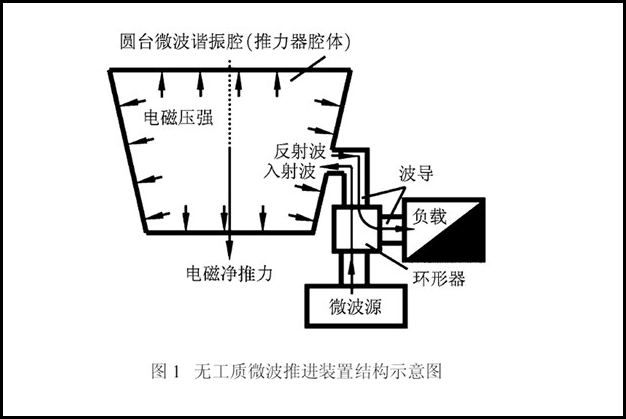Generating thrust without fuel relies on missing details
Ars Technica » Scientific Method 2013-02-08

A new system called the EmDrive, a way of using electricity to generate thrust without the need for fuel, is one of those ideas that will generate a lot of heat and noise, but probably not a lot of thrust for many years to come. I had never heard of the idea until today, and the latest paper, a translation, doesn't throw a lot of light on the physics itself. So brace yourself and let's see what we can figure out from a grainy line drawing in the translation.
The idea is based on a standing wave cavity: two mirrors—in this case, microwave mirrors—facing each other so that microwaves travel back and forth between them. In one picture, two waves are travelling in opposite directions between two mirrors. If you look at both waves simultaneously, however, you get another picture: a standing wave, like the vibration on a violin string. The key thing about this system is that these two pictures must be self-consistent. We will use that to examine the EmDrive's potential for thrust.
In our simple picture of two mirrors facing each other, the mirrors are subject to equal and opposite forces. Essentially, the photons reflect from each mirror, exerting a force in doing so. Because this is symmetric, the cavity cannot have a net force. Even if we were to make the light very focused at one end and very diffuse at the other, we are simply distributing the same number of photons differently at each end, so the total force remains the same.
Read 10 remaining paragraphs | Comments